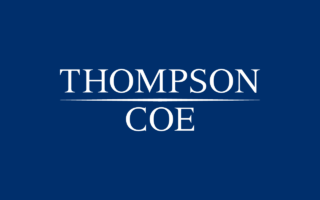Punitive Damages Coverage in Texas – Where Are We Now and Where Are We Going
By Jack M. Cleaveland Jr., Jo Allison (Jody) Stasney • Oct 1, 2008
Whether punitive damages are covered under liability policies has long plagued the Texas insurance coverage lawyer and his or her clients, and two recent decisions suggest that the outcome, at least from a public policy standpoint, may remain a question without a definitive answer. Applying Texas law, the opinions in Fairfield Insurance Company v. Stephens Martin Paving, LP and American International Specialty Lines Insurance Company v. Res-Care, Inc., analyze coverage for punitive damages under two different types of liability coverage.1 The opinions suggest, however, that the answer is only certain under one type of policy, with other types of liability coverage being fact-dependent.
The Texas Supreme Court’s opinion in Fairfield was decided first. In that case, the insurer argued that punitive damages awarded against the insured employer were not covered under the employer’s liability coverage as a matter of Texas public policy. On appeal at the Fifth Circuit, however, the panel certified a much broader question to the Texas Supreme Court: Does Texas public policy prohibit a liability insurance provider from indemnifying an award for punitive damages imposed on its insured because of gross negligence? The Texas Supreme Court narrowly held that Texas public policy does not prohibit coverage under the workers’ compensation and employer’s liability insurance policy at issue, avoiding the Fifth Circuit’s broader question, and leaving open the question of whether punitive damages are covered under other types of liability policies.
The Texas Supreme Court enunciated a two-step process necessary to answer the issue based upon a public policy analysis: 1) determine whether the plain language of the policy covers the exemplary damages sought in the underlying suit against the insured; and 2) if the policy affords coverage, whether public policy allows or prohibits coverage under the circumstances of the underlying suit. Given this two-step framework, the Fairfield decision makes sense in light of the coverage at issue.
The employer’s liability policy covered all sums the insured legally must pay as damages because of bodily injury to an employee. Because the certified question was limited to public policy, the court presumed that the policy afforded coverage for the damages. Moving to the second step, to answer the public policy issue, the court determined it must first decide whether the Legislature had addressed public policy on the issue by its enactments.
The court concluded that the following facts indicated the Legislature had spoken on public policy in this context: 1) the worker’s compensation system in Texas is optional; 2) if an employer and employee subscribe, the only policy available is the Texas Department of Insurance (TDI)-approved form; and 3) if the employee dies, the statutory beneficiaries may sue the employer for gross negligence only. Accordingly, the court concluded if the worker’s compensation system is the exclusive remedy for an injured employee, the only reason Texas Department of Insurance (TDI) must provide additional liability insurance to employers is to harmonize the statutory scheme allowing claims for gross negligence against the employer with the policy coverage.
Notably, the court did not end its opinion with its decision, but rather went on to opine on the suggested public policy analysis for other cases. The court started its discussion by noting the various outcomes of the issue in other jurisdictions, noting that other states’ courts or legislatures have reached differing conclusions, both finding and prohibiting coverage, and also noting exceptions to punitive damages coverage in the context of UIM coverage and vicarious liability situations. The court then summarized the issue as one of weighing the interest in enforcing a contract, considering the freedom to contract, versus the public policy against such enforcement.
Important to the court was the current punitive damages statutory scheme in Texas. Recent statutory amendments addressing punitive damages make clear that their purpose is to punish the wrongdoer, and downplay the role of deterrence, by deleting the language “as an example to others.” Additionally, the statutory scheme provides that an award of punitive damages must be specific as to each defendant, and a defendant is only liable for the punitive damage award against it. The Legislature has provided only a limited exception to liability to a third-party for punitive damages based on the criminal conduct of another.
Further looking to the Legislature’s intent, the court suggested that the six statutory considerations in awarding punitive damages may play a key role in answering the public policy question, three raising objective concerns (the nature of the wrong; the character of the conduct involved and the extent to which the conduct offends a public sense of justice and propriety), and three raising subjective concerns (the degree of culpability of the wrongdoer; the situation and sensibilities of the parties concerned; and the net worth of the defendant). The court reasoned that spreading the risk of and obligation for exemplary damages through insurance does not affect the objective factors, while the subjective factors are only relevant if the defendant must pay the plaintiff. In other words, if exemplary damages are to be paid by insurance, it is less relevant to set the amount based upon whether the plaintiff was trusting or the defendant was calculating or wealthy.
The court also suggested that considerations may weigh differently when the insured is a corporation or business that must pay punitive damages for the conduct of one or more of its employees. When employees or management are not involved in or aware of an employee’s conduct, the court indicated that the purpose of exemplary damages may be achieved by permitting coverage so as not to penalize many for the acts of one, encouraging courts to consider valid arguments that businesses be permitted to insure against punitive damages in this circumstance. What the court failed to address, however, is that, in most instances, an employer’s “vicarious” liability for the punitive damages of its employee is based on the employer’s conduct. For instance, an employer can be vicariously liable when the employer authorized the doing and manner of the employee’s act or the employer ratified or approved the act. In only one situation is the employer’s conduct not considered: when the employee was employed in a managerial capacity and was acting in the scope of employment.2 Thus, it appears under the supreme court’s rationale that public policy currently would allow coverage for an employer’s vicarious liability for punitive damages awarded against its employee only when the employee was in a managerial capacity and acted in the scope of his employment.
The Fifth Circuit applied the Fairfield rationale to a troubling case, American International Specialty Lines Insurance Company v. Res-Care, Inc. concluding that public policy prohibited coverage for punitive damages under a CGL policy.3 The court’s opinion is fact-specific, however, and cannot necessarily be read as a blanket prohibition on coverage of punitive damages under a CGL policy. Thus, understanding the facts is key to understanding the court’s decision.
Trenia Wright, a 37-year-old woman with cerebral palsy and mental disabilities resided at Res-Care’s facility. Wright fell in a hallway at the facility, and defecated on the floor. Vicki Kennerly, an employee at the home, found the woman and poured a mixture of undiluted bleach and another cleaner onto the floor around the woman, and possibly directly onto the woman. She then escorted the other residents outside, leaving Wright lying on the floor in the home. After spending over an hour outside eating pizza with the other residents, Kennerly returned inside and dragged Wright into a bathroom and finished cleaning the hallway floor. She did not, however, wash the bleach off of Wright. Kennerly left the facility soon afterward when her shift ended.
Two other attendants later found Wright on the floor of the bathroom and put her to bed in clean clothes, but again, did not wash the bleach off of the woman. A staff doctor observed Wright 17 hours later, but diagnosed her only with superficial burns. Two days later, Wright fell out of bed and was found unresponsive, at which point she was taken to a nearby hospital. At the hospital, she was diagnosed with extensive chemical burns on 40% of her body, and four days after the original incident, died from complications due to the severe burns and chemical poisoning. The attendant who first poured the bleach on the woman was later convicted in state court of recklessly causing bodily injury to a disabled individual.
The patient’s family filed a wrongful death and survival lawsuit against Res-Care, the hospital, treating physicians, and four of Res-Care’s employees. Given the egregious facts of the case, the settlement demands from the plaintiffs, and the coverage issues involving potential exemplary damages, AISLIC and Res-Care entered into a non-waiver agreement that authorized AISLIC to seek settlement of the lawsuit, while reserving the right to bring a claim for recoupment against Res-Care for all sums paid by AISLIC attributable to claims that were not covered under the insurance policies.
Are punitive damages insurable in Texas? In the coverage action, the court followed the Fairfield guidelines in its analysis of whether punitive damages were insurable under the applicable CGL policy. Under the facts before it, this court also “presumed” the CGL insuring language encompassed punitive damages. Next, the court examined whether any statutes specifically addressed the insurability of punitive damages for an entity such as Res-Care. Res-Care was classified as an Intermediate Care Facility for the Mentally Retarded. Certain “healthcare providers” are precluded from obtaining insurance for punitive damages (or are required to do so through an approved endorsement). Res-Care’s classification, however, did not fall into any of those specific statutes. Because no statute addressed Res-Care’s ability to obtain such insurance, the court then considered general public policy, specifically, whether the freedom of contract was outweighed by the primary purpose of punitive damages – to punish the wrongdoer.
The Fifth Circuit noted the Fairfield court’s suggestion that circumstances may exist when insurance coverage for punitive damage may be allowed, such as when the insured is a corporation responsible for damages due to the conduct of its employees. The Fifth Circuit, however, heeded the Fairfield court’s reservations about “extreme circumstances” that may warrant different considerations. The Fifth Circuit concluded such “extreme circumstances” existed for Res-Care, such as allegations of gross negligence by all defendants, not only for direct participation in the bleach incident, but also for failure to take steps to prevent the situation from occurring, and documented, systemic problems of care. These allegations, according to the court, “were so extreme that the purposes of punishment and deterrence of conscious indifference outweigh the normally strong public policy of permitting the right to contract.”4 Notably, the court did not discuss any of the statutory requirements for awarding punitive damages, either generally, or specifically those situations involving liability based on the criminal acts of another.
The Fifth Circuit’s holding illustrates the fact-intensive analysis courts likely will undertake in the wake of Fairfield to determine the public policy prohibition or allowance of insurance for punitive damages. It remains to be seen, however, what courts may do when faced with less-extreme fact scenarios. More important, however, is that neither of these opinions answers the contract question of whether punitive damages are covered. The “pure coverage” issue is one that needs to be addressed and could eliminate much of the litigation on this issue.
In Texas, the Legislature’s definitions of gross negligence and malice provide the guidance needed on the contract question. Punitive damages in Texas are awarded for conduct constituting malice or gross negligence, the former requiring a specific intent to cause substantial injury or harm to the claimant, the latter requiring an act or omission, which when viewed objectively from the standpoint of the actor, involves an extreme degree of risk, considering the probability and magnitude of potential harm to others, and of which the actor has actual, subjective awareness of the risk involved, but nevertheless proceeds with conscious indifference to the rights, safety or welfare of others. Initially, as pointed out above, the Texas Legislature has indicated that punitive damages are awarded to punish. Thus, at least in a general liability context, those damages are not awarded “because of” bodily injury or property damage. Moreover, the conduct required for gross negligence and malice findings includes “intentional” conduct. Under most types of liability policies, the insuring agreement requires some type of accidental or other unintentional conduct. Accordingly, a finding of malice or gross negligence should not meet the terms of the typical insuring agreement. Additionally, many liability policies exclude damages awarded as a result of an insured’s intentional conduct or that are expected by the insured. Thus, in most cases—particularly in cases involving an award of punitive damages directly against the actor—public policy arguments simply should not come into play, because punitive damages should not be covered by the policy. It seems the best position for an insurer in Texas is to exhaust all pure coverage arguments, before relying upon a public policy argument, which undoubtedly will require a fact-intensive analysis.
1-See Fairfield Ins. Co. v. Stephens Martin Paving, LP, 246 S.W.3d 653 (Tex. 2008) (analyzing coverage for punitive damages under a Texas workers’ compensation/employer’s liability policy); American Int’l Specialty Lines Ins. Co. v. Res-Care, Inc., 529 F.3d 649 (5th Cir. 2008) (analyzing coverage for punitive damages under a CGL policy).
2-Hammerly Oaks, Inc. v. Edwards, 958 S.W.2d 387 (Tex. 1997); Purvis v. Prattco, Inc., 595 S.W.2d 103 (Tex. 1980).
3-American Int’l Specialty Lines Ins. Co. v. Res-Care, Inc., 529 F.3d 649 (5th Cir. 2008).
4-Res-Care, 529 F.3d at 664.






